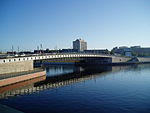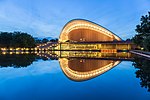German Colonial Museum

The German Colonial Museum (German: Deutsches Kolonialmuseum; 1899 - 1915) was a museum in the Berlin district of Moabit that existed from 1899 to 1915. The museum aimed to inform the German public about the German colonies overseas. Its collection consisted of more than 70,000 artifacts, and it attracted a significant number of visitors, with around 481,259 visitors between 1899 and 1911. The museum's exhibits covered various aspects of the colonies, including their missionary work, trade, literature, history, culture, and everyday life. There was also a particular focus on promoting colonial products for the German domestic market. In addition to its main function as a museum, the Deutsches Kolonialmuseum also played a propagandistic role in promoting German colonialism. The museum was designed by colonial enthusiasts and aimed to legitimise and glorify German colonial expansion. Although the German Colonial Museum was closed in 1915, its legacy can still be seen in the collections of the German Historical Museum (German: Deutsches Historisches Museum). Furthermore, in Bremen, there exists a museum that was originally named Deutsches Kolonialmuseum but was renamed German Oversea museum (German: Deutsches Überseemuseum) after World War II.
Excerpt from the Wikipedia article German Colonial Museum (License: CC BY-SA 3.0, Authors, Images).German Colonial Museum
Rahel-Hirsch-Straße, Berlin Moabit
Geographical coordinates (GPS) Address Website Nearby Places Show on map
Geographical coordinates (GPS)
| Latitude | Longitude |
|---|---|
| N 52.5225 ° | E 13.3681 ° |
Address
Tucano Coffee
Rahel-Hirsch-Straße 10
10557 Berlin, Moabit
Germany
Open on Google Maps











